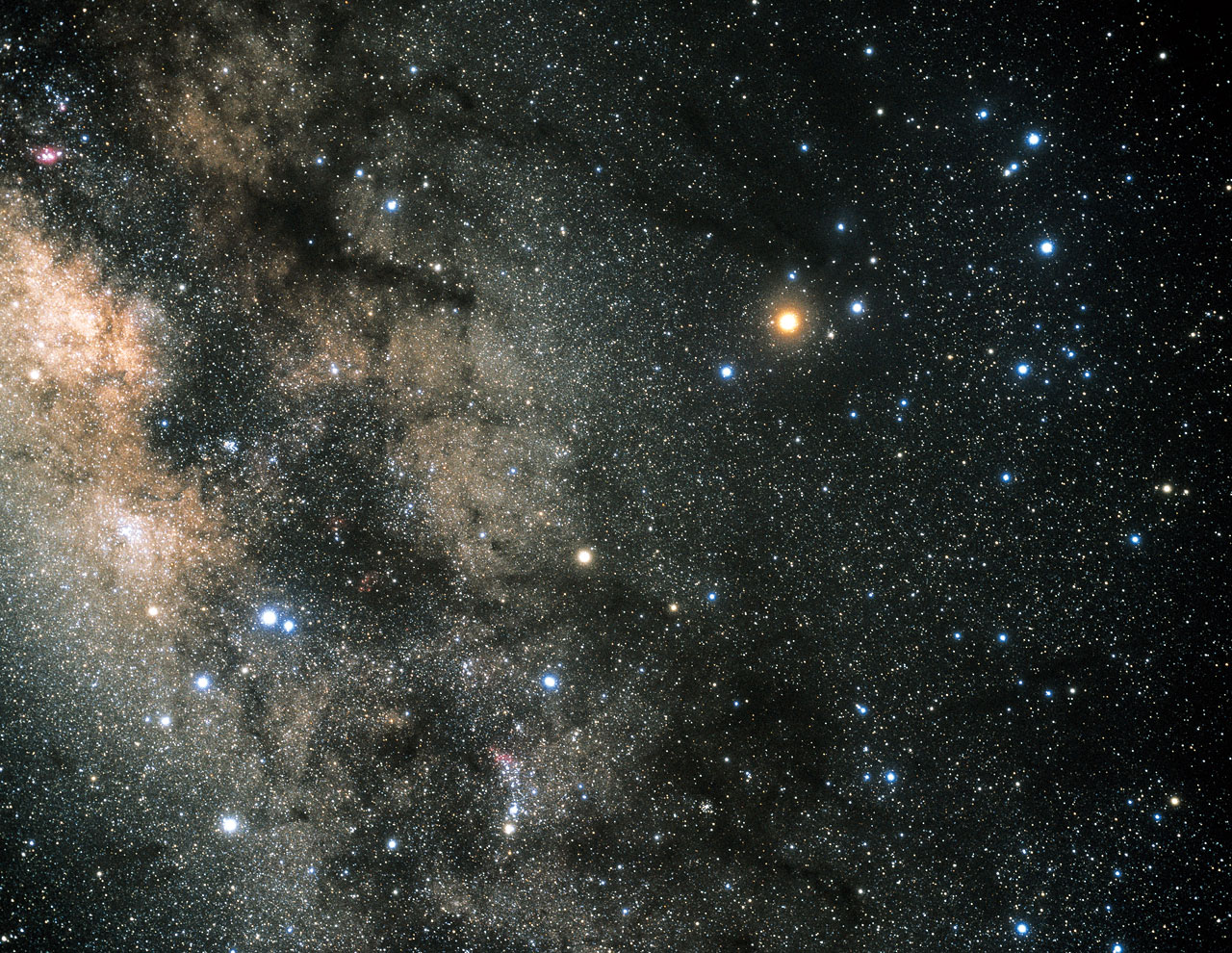by Garrett Carroll

Upon first reading “Antares” by D.M. Crawford, I was immediately struck by its subversive similarities to “Ozymandias” by Percy Shelley. In terms of theme and imagery, “Antares” is the universe-sized inverse of the poem “Ozymandias”. Instead of burying the works of a “great” king in the sands of a desert, it presents a galactic civilization that tries to erase itself, leaving only a tombstone monument in its wake on “A planet whose civilization chose death”, a monument “black / Holding up the sky.”
The civilization in question, the Karathi, choose not to persist in their self-declared malignant nature,
We’ll not destroy another ecosystem to support our ravenous hunger, massacre another of our factions to allay our fears, oppress another underclass to maintain order, nor break another generation of youth to preserve our traditions.

It’s their choice to erase themselves from existence, and that's where it parts ways with Ozymandias. The king of Shelley’s sonnet attempts to build toward some vague extant of immortality to live on in future memories, employing the skills of a sculptor, the artist of a king’s legacy.
At a larger cultural scale the Karathi come to their own dismal conclusion, that their desire to maintain order, oppress lower classes, and break the aspirant youth of future generations functions as a between scenario to its galactic civilization’s future.
It’s a take on the idea of a galactic civilization that leaves little else behind. Kings and civilizations typically tend to seek ways to attain some form of remembrance or lasting influence. Instead, the Karathi come to the realization that the only memory in which they live on is those of the oppressed, and such a deep weight of harrowing immoral nature can have significant impact on the mental state of any culture's collective conscious.
Still, as the poem concludes, the speculation leaves questions as answers. Where the deeds of Ozymandias are forgotten, the sculptor’s statues of the king are not; a face, callous, still remains.
Half sunk a shattered visage lies, whose frown, And wrinkled lip, and sneer of cold command, Tell that its sculptor well those passions read…
Whereas the Karathi civilization is gone, the monument, a symbol of their space in the universe, remains. The poem concludes with the following two questions,
On how many planets did such monuments rise among the quiet forests?
Whether by the choices of its leaders or by a timeline’s unfortunate design, there have likely been civilizations throughout the universe lost to their own destruction and decisions. There’s no telling if any civilization will survive forever. Being too cautious could lead to a pampering that causes the civilization to be too dependent on its only isolated homeworld. On the other hand, being too anarchical could cause a civilization to collapse on itself.
I’ll end this analysis by suggesting that there are no good answers to the given questions, only hypotheses that can be given to create theoretical suggestions on how intergalactic discourse and action should be made. Without observations of a galactic civilization's self-implosion, it’s impossible to know the innumerable worlds that the lack of memorial suggests. An intergalactic civilization with a need to devour other civilizations in its expansion is most definitely immoral, but there are no easy answers to dissuade leaving remnants of existence in a shared universe, whether that existence was destructive or not.
***

Garrett Carroll is a writer and poet whose work has appeared in Star*Line, Utopia Science Fiction Magazine, Aphelion Webzine, and Altered Reality Magazine. When not writing short stories or poems, he can be found finagling through too much scholarly writing in pursuit of an MA or spending time with his dogs.
"Antares", by D. M. Crawford appeared in Star*Line No. 46.1 in January 2023
